Last week I had the good fortune to attend the “Grape Juice vs. Wine” tasting experience. Master of Wine Rhys Pender, who also owns Little Farm Winery in Cawston, led this event sponsored by the BC Wine Institute.
It was held at the Cambie Street Liquor Store and was open to those in the trade and associated media. The idea was to taste unfermented grape juice alongside two samples of wine made from the same grape. At the same time, Rhys answered questions and spoke about the current harvest and challenges facing vineyard managers and winemakers.
He mentioned that the 2014 vintage has been spectacular, both in the Okanagan and Similkameen valleys. Interestingly, he doesn’t think the term ‘cool climate’ is appropriate for these two regions as there’s nothing ‘cool’ about 46° summer temperatures. He feels it better describes the coastal regions of the Fraser Valley and the Gulf and Vancouver Islands where the climate is moderate with cool, damp, mild winters. Whereas the Okanagan and Similkameen are characterized by dry, hot, short summers and cold winters. These extremes make the area rather unique and that is reflected in their wines.
Climate affects the style and flavours of a wine and conditions in the Okanagan vary greatly from north to south. Osoyoos and Kelowna may in the same valley, but as far as grapes are concerned, they are very different environments. Currently, there is a move underway in the BC wine industry to develop smaller regional identifiers, or appellations, similar to the American Viticulture Area or AVA system used in the United States. The first of these will define the Golden Mile Bench as a Designated Viticultural Area.
In the past, winemakers would wait for the grapes to show up at the winery and then decide how best to make them into wine. They simply accepted what they were given. Growers back then, tended to be of the mind that the more grapes the better. If you could harvest ten or twelve tons per acre, you made more money than if you only got five tons of grapes from the land. Nowadays things are different. Winemakers get out into the vineyards and establish important relationships with their growers. They have had an upward battle convincing growers that they want the best possible quality and so will pay more, for less. The reason for this is quite simple. The nutrients that the grape’s roots take up can be spread out to ten clusters or to three; the fewer the clusters, the greater the concentration of flavour and the better the wine. These days, depending on varietal and location, yields are more in the 1.5 to 8 tons per acre range, with smaller yields for red grapes and higher for white grapes. Some grapes such as pinot blanc and pinot gris can still produce good quality up to ten tons per acre.
Every year at harvest time, a winemaker has several decisions to make. When should the grapes be picked? Once upon a time it was only a question of sugar content, or ripeness. Now, it’s more complicated. How ripe are the seeds? What is the long-term weather forecast? What is best for that varietal from that site? What style of wine is going to be made?
Picking method is the next thing to decide. Hand picking or machine picking? One pass through the vineyard or multiple passes? Depending on the site, sometimes grapes on one side of the vine can ripen much earlier than the grapes on the other side. Some winemakers will pick once early and make a fresh, crisp fruity wine and then pick again later on when the grapes are riper and produce a richer, rounder style of wine. Sometimes these two are blended together; other times they are bottled separately to offer consumers different styles.
Depending on the year and the conditions at harvest, different levels of grape sorting is necessary. Should the grapes be de-stemmed before crushing? Should wild ambient yeast be used, a cultured yeast, or both? What about pressing? Do the grapes warrant a ‘free run’ reserve wine? How about a gentle press? All this depends on many factors. What additions or substitutions need to be made? What methods of settling or clarification are best suited to this batch? Every vintage is different and requires different answers to all these questions. The tank capacity of a winery can also be a factor in making these decisions. Clearly, it’s not easy being a winemaker.
We tasted four musts, or unfermented grape juices. The first was a pinot gris must. It was quite tasty, the grape equivalent of unpasteurized apple juice. Then we tasted a 2013 Gehringer Brothers Pinot Gris and the same vintage from Lake Breeze. There were some similar characteristics in the wines that were tasted in the juice. The Lake Breeze was a drier wine than the Gehringer, which showed riper fruit. This was likely indicative of coming from a more southern vineyard. Though different in style, both showed good varietal character. Next was the gewürztraminer must and wines from Gray Monk and Wild Goose. This where I felt, the connection between juice and wine was most noticeable. Here again, the wines were made in different styles, but both were very good examples of what BC can do with this grape. If you are a ‘gew’ fan, be sure to give both of these a try. Better yet, invite a few friends over and try them side-by-side and see what happens.
Then we moved on to the red musts, which were complete with floating grape skins. The first one was a merlot juice. The wines this time were the 2012 vintage from Hester Creek and Moon Curser. To be fair, it must be said that the Moon Curser was a Cabernet Merlot blend so it was different in character than the Hester Creek. The final sample was cabernet sauvignon juice, which was very yummy. It was easy to tell that it will make a great 2014 vintage wherever it is made. This was followed by only one wine, Jackson Trigg’s’ 2012 Reserve Cabernet Sauvignon. This wine is still a bit young and will improve with a little more aging.
The final wine of the day was a special ‘one off’ rosé called The Girls Vivacious Rosé, made at Harry McWatters Time Estate Winery in support of breast cancer. To top it all off we were treated to some very appetizing bites from Little House Catering, including Smoked Salmon Rosettes on Rye with Herbed Crème Fraiche, Gruyere and Parmesan Gougeres and Porcini Camembert-Stuffed Mushrooms. They were all very tasty but my favourite was the Prosciutto Cups with Goat Cheese and Fig treats. Amazing!

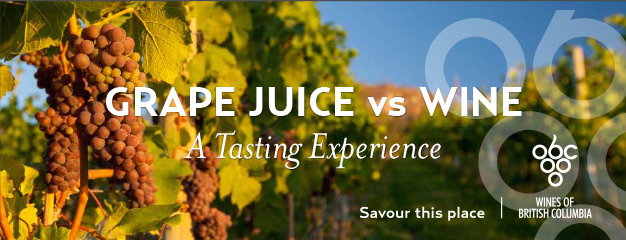
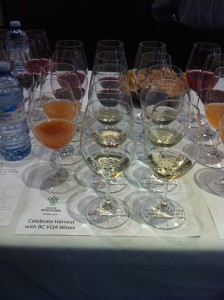
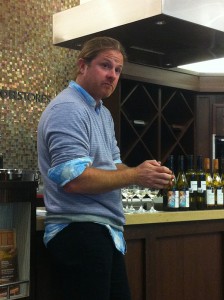
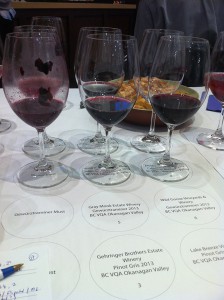
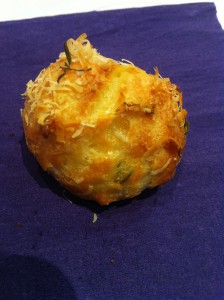
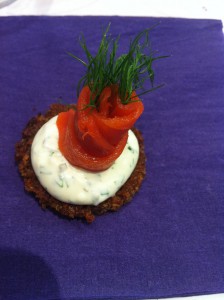
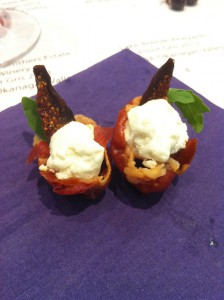

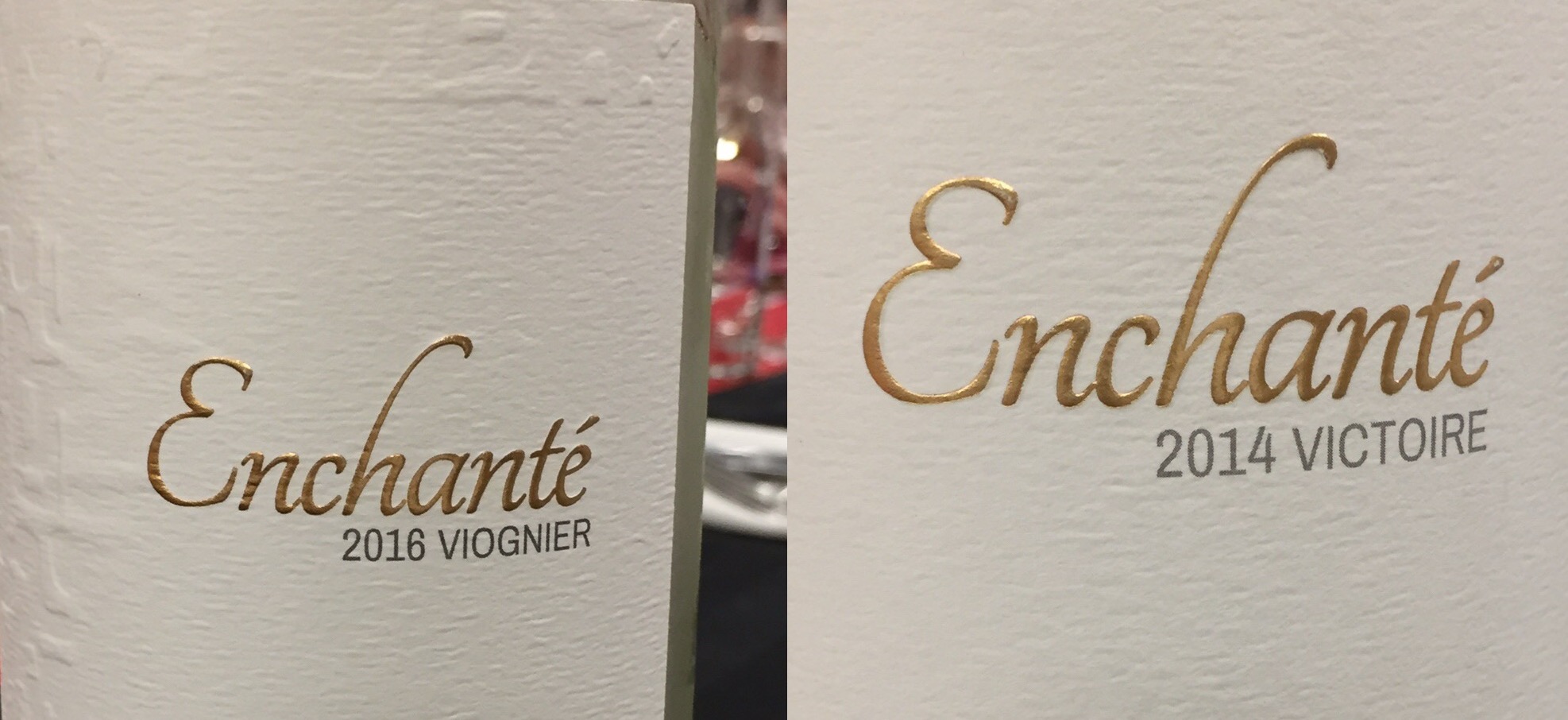

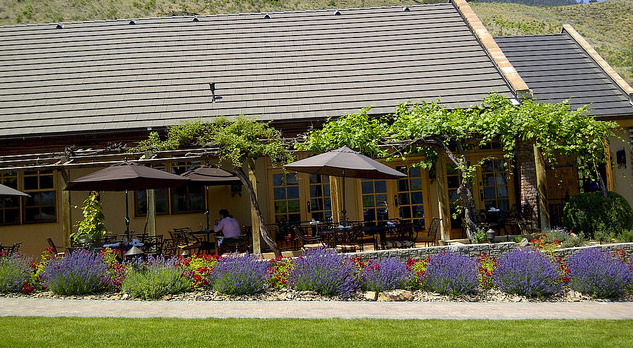
Hi
I am looking for grape juice for home made wine – can you help?
Cheers
Otto
I’ll let Sam Hauck aka the Wine Teacher answer that question